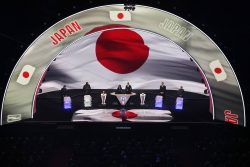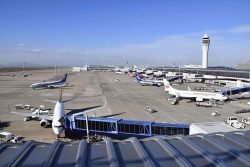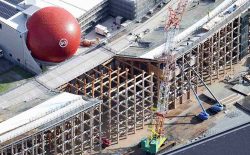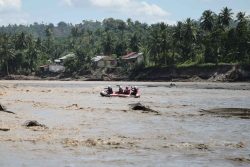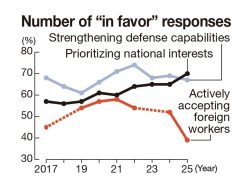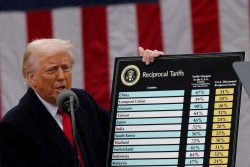
The Chinese Y-9 military reconnaissance plane that violated Japan’s territorial airspace
8:00 JST, September 21, 2024
At 11:29 a.m. on Aug. 26, a Chinese Y-9 military reconnaissance plane violated Japan’s territorial airspace over the Danjo Islands of Nagasaki Prefecture in western Japan. According to the Japanese Defense Ministry, this is the first time that a Chinese military aircraft has violated Japanese airspace.
Incursions into territorial airspace without the permission of the controlling country are a violation of international law. The Air Self-Defense Force scrambled to intercept the spy plane, which flew in Japanese airspace for approximately two minutes, a long time in aviation terms. The Japanese government strongly protested to Beijing and demanded it never happen again, but a Chinese Foreign Ministry spokesperson simply responded that China had “no intention” of violating Japan’s airspace.
There is no consensus among Japanese experts on China’s true intentions. Some believe it was an error, while others find it hard to believe that there was no hidden motive.
Gen. Kunio Orita, a veteran of the Air Self-Defense Force who retired in 2009, believes there could be three possible causes for this incident.
The first possibility is pilot error, which could involve either negligence or a deliberate action taken by an adventurous pilot. The second possibility is that the Chinese aircraft dared to take this unusual action in a bid to gather more information, such as to intercept communications. The third possibility is that China was trying to assess the Japanese government’s response to such an incident and the media’s coverage of it.
According to the Japanese government, the Chinese aircraft circled the area before flying straight into Japanese airspace. Even after an ASDF fighter jet pilot repeatedly told the aircraft it was approaching too close to Japanese airspace, the Chinese pilot ignored the warnings. After exiting Japanese airspace, the plane continued to fly in circles around the area. Orita, a 35-year ASDF veteran and former commander of the 301st Tactical Fighter Squadron and 6th Air Wing, concluded after analyzing this information that the incident “could not be a mistake.”
The ironclad rule of security is to prepare for the worst, and Orita emphasized that “Japan needs to seriously prepare for the third possibility, which is the worst case for Japan because that means there would be more to come from China.” In other words, this incident is likely a prelude to further provocative acts.
The worst-case scenario for Orita is that Chinese military planes could begin regularly violating the airspace over the Senkaku Islands in the East China Sea. Over the past decade, China has been more aggressively asserting its territorial claims over the area — where Japan has sovereignty both historically and under international law — by conducting unceasing “gray zone warfare.”
China has violated the airspace over Japan’s Senkaku Islands in the past — once in 2012 by a government aircraft and once in 2017 by a drone — but an incursion by a Chinese military aircraft would represent a significant escalation in its provocations.
The maritime space over the Senkaku Islands has been the main domain for offensive and defensive contests between Japan and China, with Chinese public vessels violating the contiguous zone and territorial waters almost on a daily basis. With these maneuvers, China is attempting to change the status quo by force, preventing Japanese fishing vessels from exercising their legitimate rights by violating Japan’s territorial waters with vessels equipped with guns.
“Airspace is the exclusive sovereignty of a country, so international law allows for a strict response to airspace violations. If Japan does nothing when there is an incursion by a military plane, China will start doing whatever it wants. It will be a terrible situation for Japan,” Orita said.
China has been aggressive in its attempts to seize effective control of the seas, but Japan maintains great advantages in the air. However, if China were to begin regularly sending military aircraft over the islands, which China does not recognize to be Japanese territorial airspace, Japan’s effective control of the Senkakus could be eroded. “It will be also a challenging situation for the United States,” Orita emphasized.
Japan and the United States are allies under the U.S.-Japan Security Treaty. Article 5 of the treaty states: “Each Party recognizes that an armed attack against either Party in the territories under the administration of Japan would be dangerous to its own peace and safety and declares that it would act to meet the common danger in accordance with its constitutional provisions and processes.”
Since 2010, the U.S. and Japanese governments have repeatedly confirmed that Article 5 applies to the Senkaku Islands. If China were to try this scenario, it would not only test Japan, but also the Japan-U.S. alliance itself.
We should also not forget that Beijing claims the Senkaku Islands as part of its “Taiwan province.” So, China’s ambition to seize the Senkaku Islands is connected to its ultimate aim of subjugating Taiwan. Some Japanese experts believe that China could launch a simultaneous military attack on the Senkaku Islands and Taiwan. That is why the unprecedented airspace incursion should also be a serious concern for the security of the Indo-Pacific region.
The U.S. government is fully aware of the seriousness of the situation. According to Reuters, Jake Sullivan, the national security adviser to U.S. President Joe Biden, who met with Chinese Foreign Minister Wang Yi in Beijing on Aug. 27-28, raised this issue, and demonstrated the United States’ determination to defend its allies. The commander of the U.S. Indo-Pacific Command, Adm. Samuel Paparo, urged China to reconsider its use of “dangerous, coercive, and potentially escalatory tactics in the South China Sea and beyond” when he held a video teleconference with Gen. Wu Yanan, the commander of the People’s Liberation Army’s Southern Theater Command, on Sept. 9.
If a Chinese military airplane were to enter the territorial airspace over the Senkakus for a short time, the United States would respond through diplomatic channels, perhaps adding a public statement if Tokyo requested it, according to Ivan Kanapathy, a former White House National Security Council member who served as director for China, Taiwan, and Mongolia. He said the U.S. military would not be directly involved.
However, what about after that? Heino Klinck, a former U.S. deputy assistant secretary of defense for East Asia, issued a clearer warning: “If the Chinese are trying to test limits of [U.S.-Japan security] treaties, that is risky business.”
The former high-ranking Pentagon official emphasized, “The United States reserves the right to, first and foremost, consult with its allies to come up with a combined decision on what would be the next steps if China crosses any specific red lines.” Klinck added, “If Chinese military forces either conduct actions that are unprecedented or particularly provocative, I believe that implies senior level approval.”
It is noteworthy that the violation of Japan’s airspace happened at a politically sensitive time for Japan and the United States. Prime Minister Fumio Kishida announced on Aug. 14 that he would not run in the next election for president of the Liberal Democratic Party. In the United States, Biden had already announced his withdrawal from the presidential race in late July. Both Japan and the U.S. are in a political vacuum. We don’t know whether and to what extent China factored these political situations into its decision to take this action now, but the current leaders of Japan and the United States are in a weaker position in terms of both their domestic political standing and in the international arena.
Regarding the ongoing LDP presidential race to choose Japan’s next leader, it is hard to say whether deep discussions are being held on foreign policy and security issues. While the candidates have discussed how to respond to a possible Taiwan contingency, the main debate has been about how to rescue Japanese residents of Taiwan, and there have been no in-depth talks about confronting China’s growing hegemony in the region. The U.S. presidential debate between Vice President Kamala Harris and former President Donald Trump paid some attention to Ukraine and the Middle East, but the Indo-Pacific region was largely ignored.
On Wednesday, a Chinese Navy aircraft carrier entered Japan’s contiguous zone for the first time, sailing between Yonaguni Island and Iriomote Island to enter the Pacific Ocean.
Because this is a politically delicate period, both the current leaders and the leaders to be of Japan and the United States should pay particularly close attention to China’s actions and prepare for the worst-case scenario.
Political Pulse appears every Saturday.

Yuko Mukai
Yuko Mukai is a Washington correspondent of The Yomiuri Shimbun.
"Editorial & Columns" POPULAR ARTICLE
-

Corporate Interim Earnings: Companies Must Devise Ways to Overcome Trump Tariffs
-

Violations of Subcontract Law: Major Automakers Must Eliminate Old Practices
-

Local Governments’ Tax Revenues: Devise Ways to Correct Imbalances in Tax Sources
-
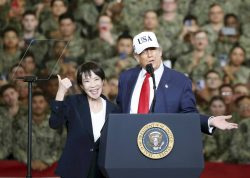
Takaichi’s Summit with Economics-Minded Trump Successfully Advanced Japan’s Security Interests
-

New Nuclear Threat: China Seeking to Follow U.S., Russia in Military Expansion
JN ACCESS RANKING
-

Govt Plans to Urge Municipalities to Help Residents Cope with Rising Prices
-
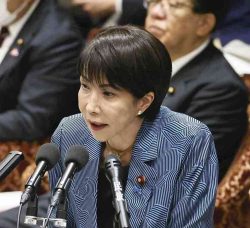
Japan Prime Minister Takaichi Vows to Have Country Exit Deflation, Closely Monitor Economic Indicators
-

Japan to Charge Foreigners More for Residence Permits, Looking to Align with Western Countries
-

Essential Services Shortage to Hit Japan’s GDP By Up to ¥76 Tril. By 2040
-

Japan GDP Down Annualized 1.8% in July-Sept.






